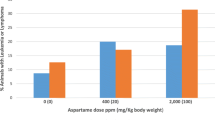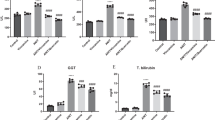Abstract
Alterations in lipid content and composition in the N-nitrosodiethylamine-induced hepatocarcinoma were investigated. Rats were administrated with N-nitrosodiethylamine in the drinking water for 12 weeks followed by normal tap water for another 6 weeks. The cholesterol content in the liver was increased shortly after the administration of N-nitrosodiethylamine and remained elevated after the removal of the nitrosoamine from the water. The phosphatidylethanolamine level was elevated during N-nitrosodiethylamine administration with a concomitant reduction in phosphatidylcholine level. Lysophosphatidylcholine and sphingomyelin levels were increased during the last four weeks of the study. The level of phosphatidylinositol was substantially reduced after eight weeks of N-nitrosodiethylamine treatment, and remained low during the post-treatment period. We postulate that changes in lysophosphatidylcholine and sphingomyelin may be a compensatory mechanism for maintaining the asymmetrical distribution of choline-containing lipids in the outer leaflet of the membrane. The elevated level of cholesterol may be a useful indicator for the early detection of N-nitrosodiethylamine-induced hepatocarcinoma.
Similar content being viewed by others
References
Magee PN, Barnes JM: Carcinogenic nitroso compounds. Adv Cancer Res 10: 163–246, 1967
Heidelberger C: Chemical carcinogenesis. Ann Rev Biochem 44: 79–121, 1975
Couch JA, Courtney LA: N-nitrosodiethylamine-induced hepatocarcinogenesis in estuarine sheepshead minnow (Cyprinodon variegatus): neoplasms and related lesions compared with mammalian lesions. JNCI 79: 297–321, 1987
Richardson FC, Morgan PH, Boucheron JA, Deal FH, Swenberg JA: Hepatocyte initiation during continuous administration of diethylnitrosaminc and 1,2- sym-dimethylhydrazine. Cancer Res 48: 988–992, 1988
Folch J, Lees M, Sloane-Stanley GH: A simple method for the isolation and purification of total lipids from animal tissues. J Biol Chem 226: 497–509, 1957
Sweeley CC: Chromatography on columns of silicic acid. Methods Enzymol 14: 254–267, 1969
Man RYK, Slater TL, Pelletier MP, Choy PC: Alterations of phospholipids in ischemic canine myocardium during acute arrhythmia. Lipids 18: 677–681, 1983
Fine JB, Sprecher H: Unidimensional thin-layer chromatography of phospholipids on boric acid-impregnated plates. J Lipid Res 23: 660–663, 1982
Korte K, Casey ML: Phospholipid and neutral lipid separation by one-dimensional thin-layer chromatography. J Chromatogr 232: 47–53, 1982
Bartlett GR: Phosphorus assay in column chromatography. J Biol Chem 234: 466–468, 1959
Kates M: Techniques of Lipidology (2nd edition), Elsevier, Amsterdam, 1986, p 241
Maniatis T, Fritsch EF, Sambrook J: Quantitation of DNA and RNA. In: Maniatis T, Fritsch EF, Sambrook J (ed) Molecular Cloning. Cold Spring Harbor Lab, 1982, pp 468–469
Bradford MM: A rapid and sensitive method for the quantitation of microgram quantities of protein utilizing the principle of protein-dye binding. Anal Biochem 72: 248–254, 1976
Snyder F: Lipids and Cancer, A Bibliography: 1947–1970, ORAU-111, Oakridge Assoc University, Oakridge, TN, 1970, p 1–119
Op den Kamp JAF: Lipid Asymmetry in Membrane. Ann Rev Biochem 48: 47–71, 1979
Berridge MJ, Irvine RF: Inositol triphosphate, a novel second messenger in cellular signal transduction. Nature (London) 312: 315–321 (1984)
Author information
Authors and Affiliations
Rights and permissions
About this article
Cite this article
Tang, H., Choy, P.C. & Chen, H. Changes in lipid content and composition during the development of N-nitrosodiethylamine induced hepatocarcinoma. Mol Cell Biochem 109, 83–87 (1992). https://doi.org/10.1007/BF00230877
Received:
Accepted:
Issue Date:
DOI: https://doi.org/10.1007/BF00230877




